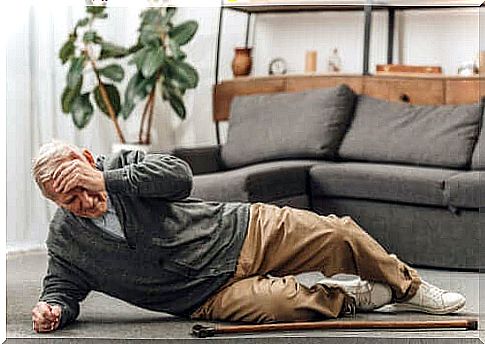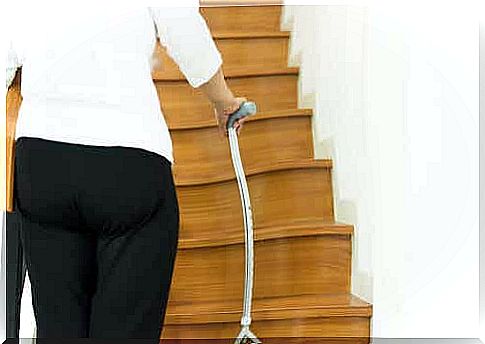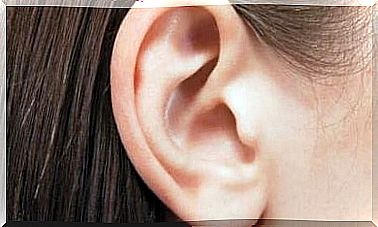How To Prevent Elderly Falls

It is important to prevent the elderly from falling, and we must all be aware of its importance. Today’s article describes the possible causes and assesses the consequences these accidents can have on the health of an elderly person.
The World Health Organization (WHO) defines a “fall” as an unintentional event in which a person loses balance and hits a ground or other solid surface that stops him.
First, age is one of the greatest risk factors for falling, and its incidence gradually increases with age. Likewise, the risk of serious injury or even death from a fall increases with age.
Fall risk factors and their prevention
These risk factors can be internal or external, Let’s take a closer look at the most common risks.
Internal risk factors
These risk factors depend on the person, either because of the aging process itself or because of the conditions that occur. Internal factors also have the greatest impact, and include:
- Age
- Previous crashes
- Visual problems such as cataracts or impaired vision
- Muscle atrophy and musculoskeletal disorders
- The balance is affected by vestibular problems
- Cognitive impairment
External risk factors

This includes factors that depend on the environment of the elderly. Your home may have poor lighting, clutter, uneven or slippery floors, carpets, and wiring. Improper footwear can also increase the risk of tipping over.
The bathroom is also a critical place. There are bathtubs and shower trays that do not have enough handles. In addition, water can make bathroom surfaces slippery. These factors increase the risk of a fall. Factors that increase the risk of serious falls in the elderly outdoors are:
- Uneven or slippery pavement
- Rapidly changing traffic lights
- Absence of ramps
Sudden movements of public transport and short take-off or landing times also have an effect. The WHO also mentions that certain drugs can increase the risk of falls. Especially drugs that affect the central nervous system.
Consequences of falls in the elderly
The consequences of crashes can be classified into three groups.
1. Physical consequences
Physical consequences are consequences that are directly related to a crash. These include fractures, sprains, or other physical injuries. An article in Revista Médica de Costa Rica y Centroamérica lists fractures and hematomas as examples of these consequences.
Falls that occur when an elderly person is alone at home increase the risk of hypothermia and dehydration. This is because an elderly person is often unable to get up without help.
2. Psychological consequences
The emotional impact of a fall may include fear of its recurrence, as noted in the study mentioned in the previous section. In many cases, this leads to a decrease in daily activity.
3. Socio-economic consequences
Crashes undermine the financial security of an elderly person, as potential medical costs can be disproportionate to a person’s income level. At the health care level, it increases the number of consultations, hospitalizations, surgeries and rehabilitation.
Ways to prevent elderly falls
You will need to make the necessary changes in your home to prevent it from tipping over, such as installing adequate lighting, keeping the bathroom floor dry, installing non-slip mats, and even adjusting the height of the bed.
Are there stairs in the house? Then make sure all steps are level and non-slip and there is a fixed handrail on each side of the stairs.
The best way to prevent falls

Modifying some home structures can help reduce the risk of falls. The aim is to support the independence of the elderly so that they can stay in their own home for as long as possible.
The WHO recommends exercising lightly or moderately intensely. This is because it increases strength, reduces depression, improves joint pain, and reduces the risk of diabetes and cardiovascular disease.
In addition, they should regularly check both their vision and hearing and any equipment they use for any problems.
The second step to prevent a fall
This consists of knowing the factors that lead to a crash. Once we identify the risk factors, we can take action to prevent potential crashes.
The third step to prevent a fall
This includes all measures intended for the necessary rehabilitation in order to restore the condition of the elderly person to an optimal state. In addition, the elderly person should learn to ascend orally after a fall.
To do this, it is recommended to turn your body to support your knees, reach the crawl position and get up by leaning on a nearby object.
The fall of the elderly is a major problem that we must strive to prevent
Estimates show that 30% of those over 65 and 50% of those over 80 crash at least once a year. For this reason, efforts must be made by both health professionals and other close people to prevent it.
By taking the above recommendations into account, we can significantly improve the safety conditions for the elderly. Thus, preventing falls in the elderly is much easier.









